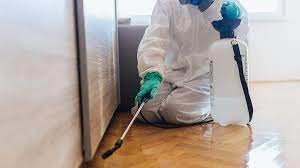Internet sites, blogs, and video channels promote various bed bug treatment options. These treatment solutions can pose several safety concerns if you do not use them appropriately. Just because a particular treatment is legal doesn’t mean it is effective or safe.
Failure to pay attention to safety issues when treating bed bugs can lead to dangerous and costly problems. This post walks you through some standard safety issues when dealing with different bed bug treatments.
Table of Contents
Safety issues when using pesticides
A CDC health advisory dated November 2012 noted severe health concerns associated with using pesticides to control bed bugs. A decade later, research still shows that the same safety issues persist. In a nutshell, we can summarize safety issues when treating bed bugs using pesticides as follows:
Approval of pesticide to be used against bed bugs
Most people rush to the store looking for a quick fix when discovering bed bugs. If you panic, you will make mistakes when treating bed bugs. One of those mistakes is using unapproved pesticides to treat bed bugs. The USA’s Environmental Protection Agency (EPA) tests all bed bug pesticides it registers.
All EPA-registered pesticides have a label containing comprehensive guidelines on how, where, and when to use them. Some pesticides are approved for outdoor use, while others are designated for indoor use. Not following the EPA’s guidelines can lead to dire consequences. The guidelines tell you whether:
- The EPA has tested, approved, and registered the pesticide
- The EPA has approved the pesticide for use against bed bugs
- The EPA has approved the product for indoor use
Pesticide application
Using a particular pesticide without following the guidelines stipulated on the label is unsafe. For example, fear and panic can tempt you to use too much or apply pesticides more often than the label permits. Taking such drastic measures will make your home unsafe and uninhabitable. When applying pesticides to kill bed bugs, you must follow the label’s guidelines concerning:
- How you should apply the pesticide
- How often can you apply the pesticide within a particular period
- Whether you can use the pesticide in the presence of pets
- Where you can apply the pesticide. For example, on mattresses, cracks, crevices in the kitchen, etc.
- How you should protect yourself when applying the pesticide
Point to Note: Using pesticides is no longer as effective as most people think it is because bed bugs are resistant to most pesticides. Instead of using pesticides, you should use safe and effective treatments such as heat treatment.
Safety issues when using heat treatment
If you do it correctly, heat treatment can guarantee 100% effectiveness in killing bed bugs. You can use three application modes to apply heat in your fight against bed bugs. These modes of application include:
- Washing machine and dryer
- Portable heat chamber
- Steaming
These modes of treatment are relatively safe, but some safety issues can arise if you are not careful. The safety issues can be summarized as follows:
Handling heat-sensitive belongings
Many people panic and forget that heat can cause severe harm and damage if they don’t handle it properly. Before applying it in your home, you must remove all sensitive belongings and store them in a safe place. Items such as furniture catch fire and burn down your house. To eliminate safety issues concerning heat-sensitive things, you must:
- Relocate all pieces of furniture to a safe space. Moving the furniture away from the wall and any clothes is advisable if you cannot relocate them.
- Remove anything that expands and explodes when subjected to heat. Examples of such items include glass containers, flammable products, and gas grills, to name a few.
- Remove anything that has a magnet because magnets often lose their magnetic strength when subjected to heat. Your fridge is an example of a household item that uses magnets.
Using chemicals in the washing machine
Using a washing machine to get rid of bed bugs by itself is safe. However, using chemicals in the laundry process to help eliminate bed bugs raises some significant safety issues. Chemicals such as rubbing alcohol vaporize swiftly and are highly flammable. According to the Washington Post, a woman tried to use rubbing alcohol against bed bugs but caused a fire. The fire left ten families without a home and three people hospitalized.
Safety issues when using cold treatment
Temperatures below 0° F (-17° C) kill bed bugs, but it’s best to use freezing as part of a comprehensive treatment plan. Freezing may require special equipment because most home freezers cannot attain the temperatures needed to kill bed bugs. Freezing bed bugs using a freezer does not present serious safety issues. However, other cold treatment techniques, for example, using carbon dioxide, have some serious safety concerns.
Carbon dioxide can damage your property and cause serious harm to you, your loved ones, and your pets. An example of one scenario where carbon dioxide is dangerous is when you use too much of it in an infested room. Too much carbon dioxide in a poorly ventilated space can cause a fatal low-oxygen scenario. A carbon dioxide cylinder can also explode and cause severe injuries if you don’t handle it properly.
Final Thoughts
Bed bug treatment is a complex process with significant challenges, no matter how you choose to deal with it. Most safe, Do-It-Yourself (DIY) treatments can become a nightmare if you don’t follow the proper procedures. It is in your best interest to carry out comprehensive research and due diligence before you treat bed bugs, regardless of the treatment method you choose.
FAQs
Can bed bug pesticides kill you?
Most safety issues concerning pesticides involve illnesses such as headaches, dizziness, difficulty when breathing, and nausea. Cases of fatalities involving pesticides are rare, but they can happen.
Are bed bug treatments toxic to humans?
Bed bug treatments containing chemical compounds such as Neonicotinoids and Pyrethroids are highly toxic to humans at low concentrations. Nonetheless, several non-chemical treatments are safe for humans. Examples of such bed bug treatments include:
- Heat treatment
- Essential oils
- Vacuuming
How do you know that you are treating bed bugs safely?
The only full-proof way to know that you are treating bed bugs safely is by using safe, non-chemical methods that cannot harm humans and pests. However, if you choose to use pesticides to treat bed bugs, you must follow all the labels’ guidelines.

